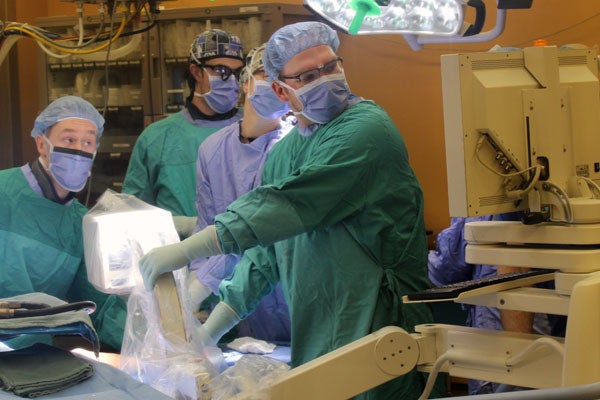
Behind the scenes of Canada's first hand/arm transplant
Published: January 14, 2016
The surgery itself may have taken 14 hours, but the planning for it began five years earlier.
A 49-year-old woman received a new hand and forearm through a still rare type of surgery performed at UHN’s Toronto Western Hospital.
Known as Vascularized Composite Allotransplantation (VCA) it’s an emerging field of surgery that blends transplant surgery and microsurgery.
Read more about the surgery
Professor Ronald Zuker of the department of surgery saw the promise it could deliver. With early successes in the United States and Europe, Zuker – who is also a plastic and reconstructive surgeon at The Hospital for Sick Children – established a committee to investigate the procedure.
“Initially we wanted to be able to respond to questions from patients and their families, as well as stay up-to-date on the field,” said Zuker. However the committee soon began mapping out how this surgery could be delivered locally.They collaborated closely with colleagues at SickKids and UHN and worked with government officials and the Trillium Gift of Life Network to develop the protocols and reviews that were necessary before the surgery could be introduced in Toronto.
“As we went through that process, we managed to put together a team at U of T so we could do this,” said Zuker. “We would reach out to specialists in other areas who could lend their expertise and perspective to different issues we would face. It helped us identify the team of people available who were interested and who wanted to be involved.”
At its core, VCA needs a transplant team – who can focus on maintaining the viability of the limb and overcoming immune or infection issues – and a team of micro-surgeons – who connect the vascular and nervous systems. But specialized anesthesiologists, nurses, pharmacists and rehabilitation specialists are also required to ensure the surgery is a success.
With the right people in place, and with government approval in hand, the team was ready to find the right patient. A suitable donor couldn’t be found for the first patient put on the list and he was eventually removed. The second patient added was the woman who successfully underwent the procedure and is now recovering. Zuker anticipates with news of the surgery now spreading, new patients will soon come forward.
“Our aim is to help those patients who are having a difficult time using their prosthesis,” he said. “For those who are managing with their assistive devices, the benefits of this surgery may not be optimal. But for those patients who need a better option – such as double amputees – we are able to provide a new alternative for them.”
For now, donors need to be close to the patients who receive them. Zuker explained that there is only a six-hour window where muscle – especially those in the hand and arms – can be without blood circulation before it starts to deteriorate. However, new technology is being developed that could increase that window to 12 to 14 hours. That would allow for donors to be identified from across Ontario – and possibly the country.
He is also optimistic that the groundwork done by the U of T team will open the doors for other medical centres in Canada to follow suit.
“We’re confident that the work we have done will mean this type of surgery will be available to more Canadians going forward,” Zuker said.
(Below: with the arteries are attached, Dr. Stefan Hofer (l) and Dr. Toni Zhong, both plastic surgeons, move on to attach the blood vessels/ photo by University Health Network)



